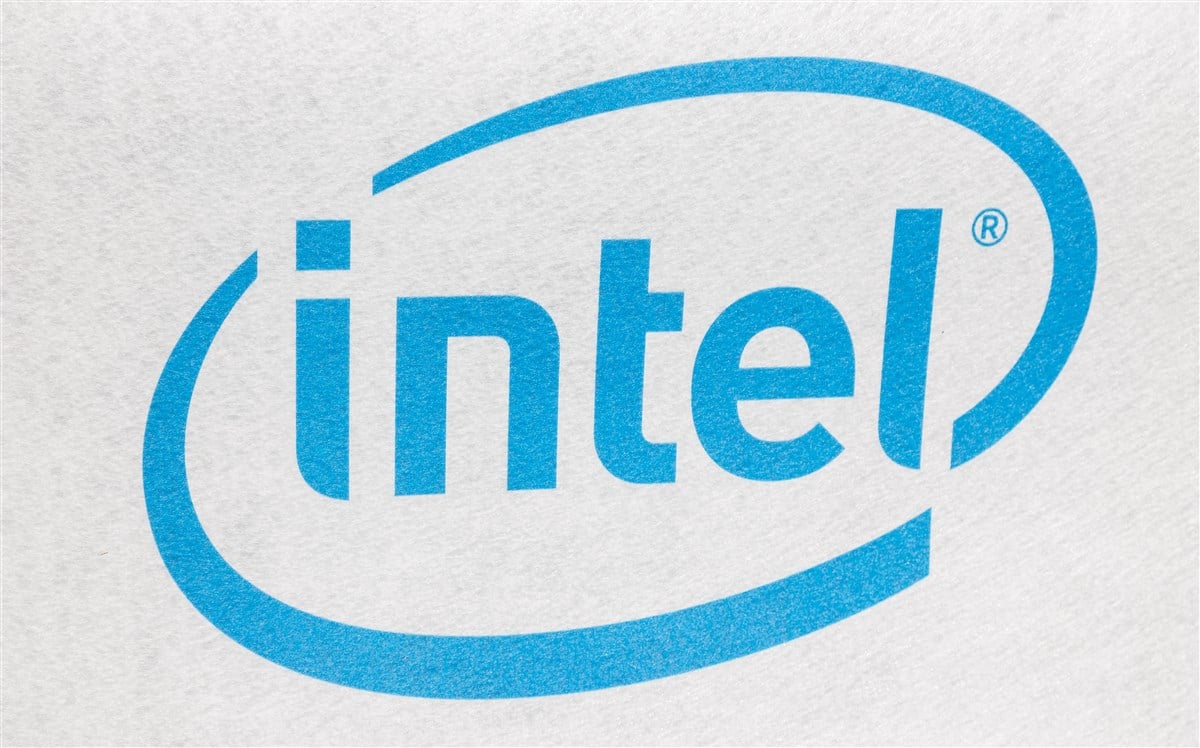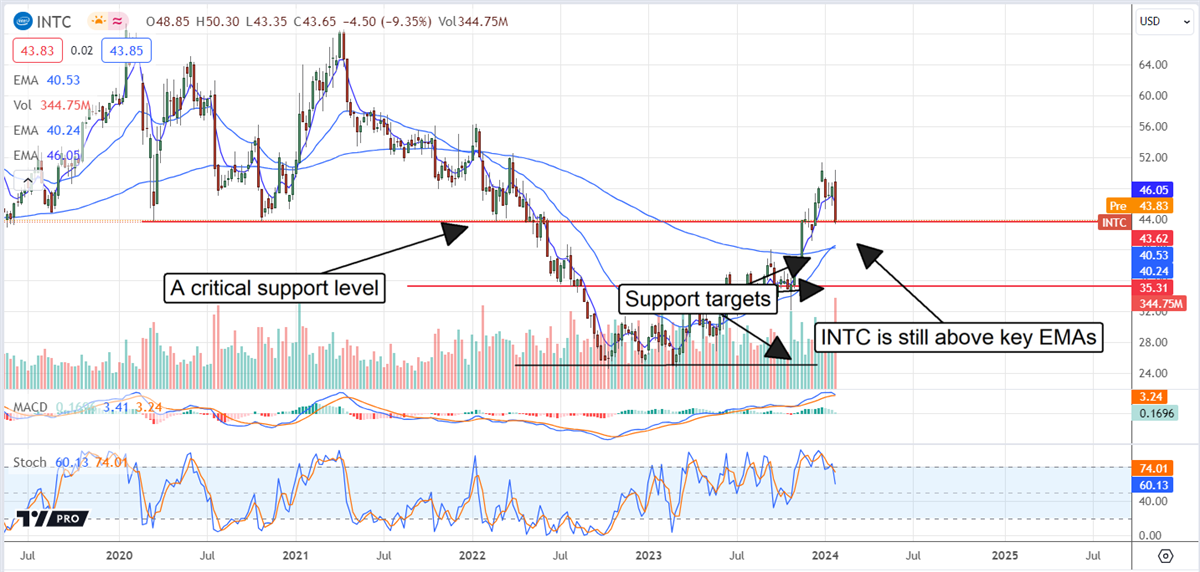Intel Q4 results: A bad sign for tech earnings 
Intel's (NASDAQ: INTC) Q4 results and guidance for Q1 were mixed, to say the least, giving ample reason for the market to sell off, but the depths of the correction may have already been plumbed. The takeaway from the results and resulting analyst activity is that the outlook has been reset. Intel is still on track to grow, and its turnaround and growth efforts are gaining traction, but the outlook is trimmed and weighing heavily on the price action. That poses a risk for Intel investors today, but there is a more significant risk for the tech sector and the stock market at large. That risk is that the quality of Intel's guidance will become a trend across the tech sector, leading many of today's market leaders into a similar correction. Intel has great Q4, guides weak for Q1 Intel's Q4 results were solid and continued the trend set earlier in the year. The efforts of CEO Patrick Gelsinger are guiding this blue-chip tech into a turnaround that is gaining traction. The company reported top-and-bottom-line growth above consensus efforts because of its diverse business. The Data Center and Network and Edge segments are down YOY, which is concerning due to potential share losses to NVIDIA and AMD but offset by strength in Client Computing, Mobileye, and Intel Foundry Services. Those segments are up 33%, 13% and 63%, respectively. Margin is another area of strength for Intel. Cost-cutting efforts trimmed $3 billion in spending to drive significant outperformance on the bottom line. The gross and operating margins both contracted compared to last but far less than expected, leaving the adjusted earnings at $0.54, $0.09 and 20% better than the analysts' consensus reported by Marketbeat.com. Cost savings are expected to hold into the current year and be compounded by revenue leverage as the year progresses. However, the Q1 guidance was below consensus, leading the analysts to reset their expectations. The target $12.2 to $13.2 billion in revenue is up 8.5% at its midpoint and may be cautious but still well below the consensus $14.15 with similar weakness in the earnings outlook. The company expects to reverse last year's losses and improve upon that sequentially. Still, the Q1 target is less than half what the analysts forecasted and is no catalyst for a market rally. Companies with inflated and inflating expectations for CQ4 results and C2024 include NVIDIA (NASDAQ: NVDA), Meta Platforms (NASDAQ: META), Alphabet (NASDAQ: GOOG), and Microsoft (NASDAQ: MSFT). Analysts reset sentiment for Intel: sentiment weakens but still supportive for this market The analysts' activity following Intel's Q4 release is as mixed as the company's results but not bearish for the market. The ten revisions tracked by Marketbeat.com include seven reduced price targets, a downgrade to Hold, and two boosted price targets, including the new high target, and only one revision is below the consensus. This may continue to catalyze volatility in the market but shouldn't lead it too much lower, with the consensus only 5% below Friday's closing price and still above the critical moving averages. Among the long-term drivers for this stock is its shift into foundry services. On-shoring and demand for advanced foundry technology are expected to be significant drivers for the Intel Foundry Services segment, aided by billions in federal grant money. The caveat is that the big gains aren't expected until late this year or 2025. MarketBeat All Access is our complete suite of portfolio monitoring software, research tools, stock screeners, proprietary reports, and more. Upgrade today and get $200 off your 2023-2024 subscription. Free for 30 days. Start Your Risk-Free Trial Here The technical outlook: range-bound Intel is at a critical turning point The chart of Intel stock prices does not suggest a downtrend so much as range-bound trading. Over the past two years, the action put in a bottom, hit a top, and is now testing support at the midpoint. The midpoint is a critical pivot for technical traders and market activity and may result in a rebound or deeper dive if breached. A move to the range's low end should be expected if the market cannot hold support above the midpoint and then confirms resistance below it. Until then, a dip below the midpoint is a potential buying opportunity this market may not pass up. 
Written by Thomas Hughes Read this article online › Further Reading: |
Tidak ada komentar:
Posting Komentar